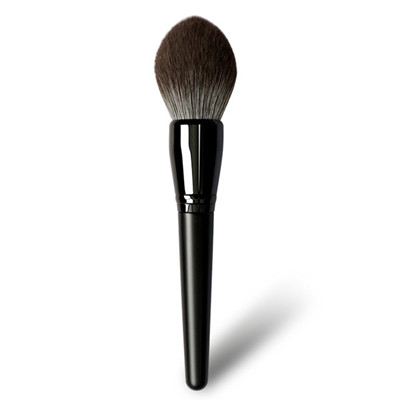1. For direct challenges of the trade war
Tariff cost transfer and optimization
a. Reduce dependence on exports to the United States through supply chain diversification, such as setting up factories in Southeast Asia (Vietnam, Indonesia, etc.) and taking advantage of local low tariff policies to export to the United States.
b. Negotiate with customers to share tariff costs, or improve bargaining power through product upgrades (high value-added products).
c. Optimize logistics routes and choose intermediate countries that are not subject to tariffs.
b. Negotiate with customers to share tariff costs, or improve bargaining power through product upgrades (high value-added products).
c. Optimize logistics routes and choose intermediate countries that are not subject to tariffs.
In compliance and certifications
Strengthen compliance with international regulations (such as the US FDA, EU REACH, etc.) to ensure that makeup brushes meet environmental protection, animal protection (such as no animal testing certification) and other requirements to enter the high-end markets in Europe and the United States.
2. Diversified market layout
Explore emerging markets
a. Southeast Asian market: With the rise of local beauty consumption, affordable makeup brushes can be launched for countries such as Indonesia, Thailand, and the Philippines.
b. Middle East market: Design luxury makeup brushes to meet the needs of Middle Eastern women for high-end makeup tools.
c. African market: Cover the rapidly growing middle class through cross-border e-commerce (such as Jumia).
b. Middle East market: Design luxury makeup brushes to meet the needs of Middle Eastern women for high-end makeup tools.
c. African market: Cover the rapidly growing middle class through cross-border e-commerce (such as Jumia).
Deepen the domestic market
a. Seize the dividends of China's "national fashion beauty" and launch localized designs (such as IP joint names, national style packaging).
b. Directly reach consumers through live e-commerce (TikTok, Kuaishou) and social e-commerce (Xiaohongshu) to create private brands.
b. Directly reach consumers through live e-commerce (TikTok, Kuaishou) and social e-commerce (Xiaohongshu) to create private brands.
3. Technology upgrade and product innovation
Intelligent manufacturing and automation
a. Introduce automated production equipment (such as AI sorting, 3D printing molds) to reduce labor costs and improve efficiency.
b. Apply digital management tools to optimize inventory and supply chain response speed.
b. Apply digital management tools to optimize inventory and supply chain response speed.
Material and functional innovation
a. Develop environmentally friendly materials (such as plant fiber bristles, degradable packaging) to cater to the international sustainable consumption trend.
b. Introduce functional products (such as antibacterial bristles, modular brush handles) for sensitive skin, professional makeup artists and other segments.
b. Introduce functional products (such as antibacterial bristles, modular brush handles) for sensitive skin, professional makeup artists and other segments.
Cross-border cooperation and brand premium
a. Join hands with international beauty brands and designers to enhance brand value.
b. Enhance user stickiness through the "tool + content" model (such as matching makeup tutorials).
b. Enhance user stickiness through the "tool + content" model (such as matching makeup tutorials).
4. Supply chain and value chain reconstruction
Vertical integration and localized production
a. Extend upstream, control the supply of key raw materials (such as high-quality animal hair and synthetic fibers), and reduce the risk of cost fluctuations.
b. Establish regional central warehouses around the target market to shorten the delivery cycle (such as European warehouses and Latin American warehouses).
b. Establish regional central warehouses around the target market to shorten the delivery cycle (such as European warehouses and Latin American warehouses).
Flexible supply chain system
a. Adopt the "small order fast response" model to adapt to cross-border e-commerce and personalized customization needs.
b. Use big data to predict market trends and dynamically adjust production capacity.
b. Use big data to predict market trends and dynamically adjust production capacity.
5. Long-term strategy: branding and globalization
Shift from OEM/ODM to OBM
a. Gradually reduce reliance on OEM and occupy the mid-to-high-end market by incubating own brands.
b. Build a global brand image through independent websites and overseas social media (Instagram, TikTok etc).
b. Build a global brand image through independent websites and overseas social media (Instagram, TikTok etc).
Invest in R&D and design
a. Establish overseas design centers (such as Paris and Seoul) to absorb international trends.
b. Apply for patented technologies (such as antibacterial brush technology) to build technical barriers.
b. Apply for patented technologies (such as antibacterial brush technology) to build technical barriers.
6. Risk hedging and policy leverage
Use policy support
a. Focus on China's "dual circulation" policy, apply for special funds for foreign trade transformation and upgrading, and policy dividends for cross-border e-commerce comprehensive pilot zones.
b. Participate in regional cooperation under the framework of RCEP (Regional Comprehensive Economic Partnership Agreement) to reduce tariff costs.
b. Participate in regional cooperation under the framework of RCEP (Regional Comprehensive Economic Partnership Agreement) to reduce tariff costs.
Financial instrument hedging
a. Hedge exchange rate fluctuation risks through foreign exchange futures and forward contracts.
b. Use export credit insurance to reduce overseas accounts receivable risks.
b. Use export credit insurance to reduce overseas accounts receivable risks.
The Sino-US trade war is both a challenge and a catalyst. Chinese makeup brush factories need to shift from low-cost manufacturing to high-value creation, gradually get rid of their dependence on a single market through market diversification, technology upgrades, branding and supply chain resilience, and take a more active position in the global beauty tool industry chain.







